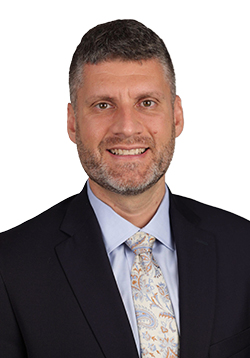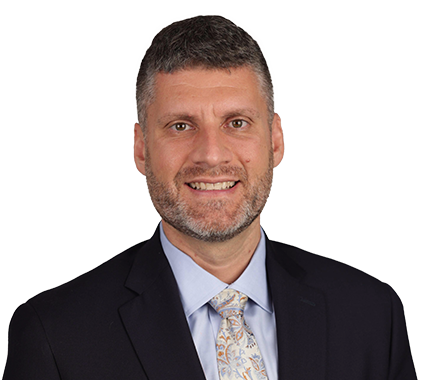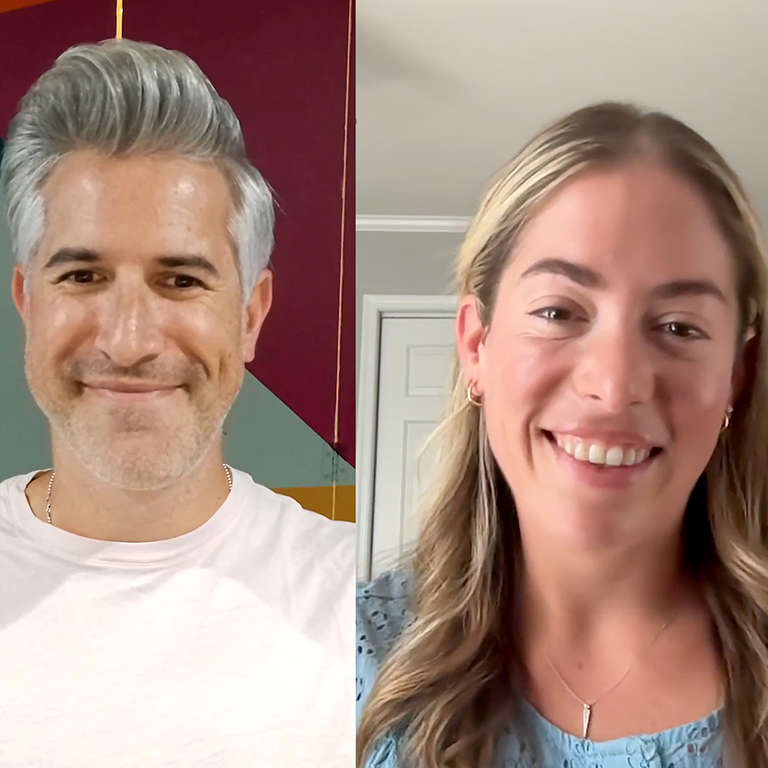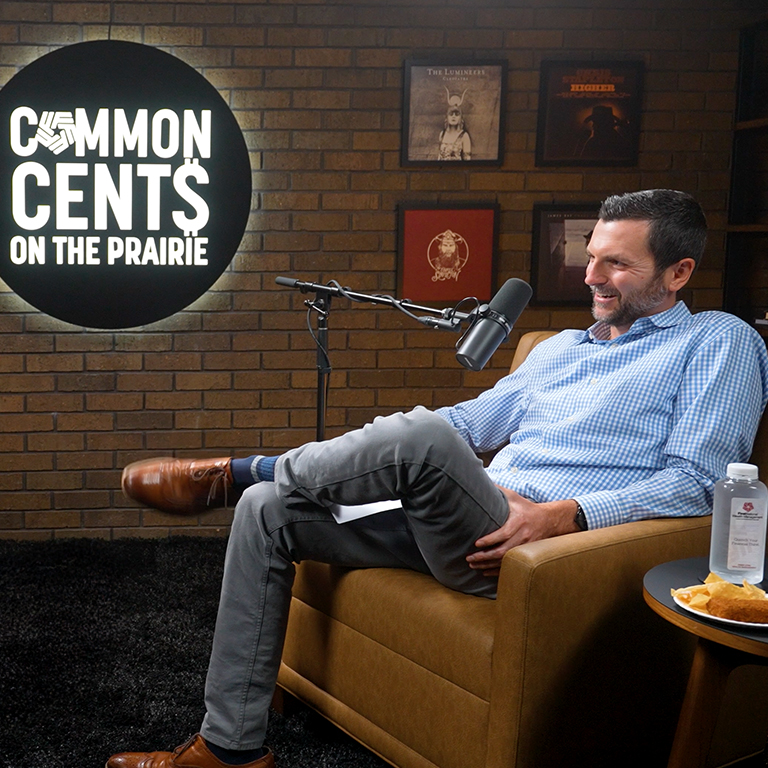
When it comes to budgeting, investing, and saving, there’s a lot to think about, and not a lot of direction about where you should start. We at First National Wealth Management have created a plan that will work for anyone, which we’ve named the Wealth Accumulator Roadmap. It’s a simple, step-by-step outline to guide you on your personal finance journey.
Read more below, or listen to our latest podcast episode featuring eight steps for managing your money better:
Step #1 – Save $1,000
Nearly six out of ten Americans have less than $1,000 saved. If you’re in that camp, then this is a no-brainer. Having $1,000 saved gives you some space between where you are today and what may be lurking around the corner. This way, you can begin accomplishing your other financial goals without going further into debt when an emergency happens. It’s like a wound. You can’t begin healing until you stop the bleeding.
Step #2 – Pay off all high-interest debt
What counts as high-interest debt? The most common example is credit card debt. Personal loans, car loans, medical debt, and even some student loans could also be considered high-interest debt, depending on the interest rate.
You can consider high-interest debt as any debt with an interest rate higher than a reasonable rate of return for an S&P 500 index fund over the long term. Since the 1920s the S&P has averaged approximately 10% per year in returns. If your debt has an interest rate higher than this, it would be classified as high-interest debt.
Paying off all high-interest debt is the second step because of one factor: compound interest. It’s been called the eighth wonder of the world when in reference to savings. However, when it’s working against you, compounding on high-interest debt will suck the life out of your finances. You won’t earn enough in your investment or retirement accounts to keep pace with the compounding interest on your debt.
If you DO have debt like this, there are a number of ways you can tackle it. The most popular method would probably be the snowball method offered by Dave Ramsey, where you list your debts, smallest to largest, attacking the smallest balance first while making minimum payments on the rest. Then, once you pay the first one off, you attack the next smallest balance, and the next one, and the next one, until you’ve paid your entire debt.
Whether you choose this method or some other method to pay off your high-interest debt, the sooner you can get that debt behind you the better. The first step to getting out of a hole is to stop digging.
Step #3 – Save enough to get your employer match
If you are employed by an organization, chances are you have access to a retirement plan. Most employer-sponsored retirement plans offer a “match” where the employer matches an employee’s contributions up to a certain percentage.
This is commonly referred to as “free money,” but that’s only partly true. In most instances you, as the employee, need to give up something to get this money: more of your paycheck. Contribute at least enough each pay period to take full advantage of the match.
Step #4 – Fully funded emergency fund
Saving $1,000 is just a starter emergency fund. A full emergency fund involves saving much more than $1,000. Just how much more depends on a couple factors – how close you are to retirement and how quickly you could replace your income if you were to lose a job.
The conventional wisdom is that a full-funded emergency fund contains enough to cover 3 – 6 months of your living expenses. However, the closer you are to retirement, the more you need to have saved. As you approach retirement, it’s a good idea to have at least two years of living expenses set aside to cover your lifestyle without having to pull money from your retirement or investment accounts.
The second factor – how long it would take you to replace your income should you lose your job – is pretty self-explanatory. If you work in a city or a field where you could easily find another job, your emergency fund may not need to be as large. However, if you are a highly compensated individual in a specialized field, opportunities may be limited. That could also mean you may need to move for a new opportunity. In that case, your emergency fund should probably skew higher.
Another thing to consider is whether your family has one income or two. Those with two incomes have a little more cushion for living expenses while their significant other searches for a new job.
Step #5 – Save 15 – 20% of gross pay towards retirement
Once your high-interest debts have been paid off, you are getting all the free money available from your employer, and you have a solid base of savings, you can now move on to more aggressive savings goals.
You should be putting 15 – 20% of your gross pay towards your retirement in this stage.
The old adage was always to save 10% of your gross pay toward retirement. That threshold was set a long time ago – back when we lived, on average, much shorter lives, we had significantly less healthcare expense, we were sure social security would be there for us, and many of us had pensions from companies we spent decades working for.
That isn’t today’s reality. We need more to fund (what could be) a long retirement.
Contributing at least 15% of your gross pay to retirement accounts will, over time, allow you to have a comfortable retirement. If you can’t contribute 15% right now, that’s okay. One way to get there is to automatically increase your contribution each year to coincide with pay increases. This ensures you’re making progress without having to eat the elephant at one time. Before you know it, you’ll be saving at your desired rate.
Step #6 – Save for children’s college
College saving isn’t as controversial as it should be. As a society, we have somehow put saving for our children’s college above our own financial wellbeing. A study by T. Rowe Price found that 74% of parents are prioritizing their children’s college savings ahead of their retirement savings.
We want to give our kids the world and make sure they have more opportunities than we did. But doing so could put our own futures at risk. College savings should come after you’ve established a solid financial foundation for yourself and your future.
Step #7 – Pay off all remaining debts & save for future expenses
This is the step where you finish paying off your remaining low-interest debts while also saving for known future expenses.
What constitutes low-interest debt? Debt that accrues interest at a lower rate than a reasonable expectation for a return on investments in your retirement accounts is considered low-interest debt (see Step 2 for additional information). This is most often going to be your mortgage and possibly any remaining student loan debt you might have (any student loan debt that is not low-interest should be tackled in Step 2).
During this stage you should be focused on getting rid of the rest of your debt so you can free up all your income to fund your saving and investing priorities. But at the same time, you may also be facing some large, known expenses coming down the road.
I’m the father of two daughters, so I have a reasonable belief that I will be contributing to a couple weddings at some point in the future. But maybe you’re saving to start a new business, buy a second home, or take your dream vacation. Expenses like these are not surprises – you know they are coming.
You can save for these types of expenses while you are focusing on extinguishing your remaining debts, especially if the only debt you have left is your home.
Step #8 – Contribute to a non-retirement investment account
Once in retirement, you should have three buckets from which to pull money: (1) a Roth retirement bucket, (2) a pre-tax retirement bucket, and (3) non-retirement investment bucket. Having these three buckets can help you legally manipulate how much you pay in taxes in any given year.
Step 8 helps you start filling the non-retirement investment bucket, allowing for advantageous tax diversification. These investment accounts don’t have any restrictions on use — they are available whenever you need or want them — nor are you required to pull from this bucket like you are with pre-tax accounts.
How we can help
It makes no difference whether you’re just getting started on your financial journey or getting closer to the finish line, you need to know where you stand today and where you’re going tomorrow. If you’ve reached the point when you think it might make sense to work with a partner to help you along your financial journey, reach out to us.
Any comments, insights, or strategies discussed in this article are intended to be general in nature and, therefore, may not be suitable for you and your situation, whatever that may be. Before acting on anything written here, please consult with your attorney, CPA, and/or your financial advisor.




